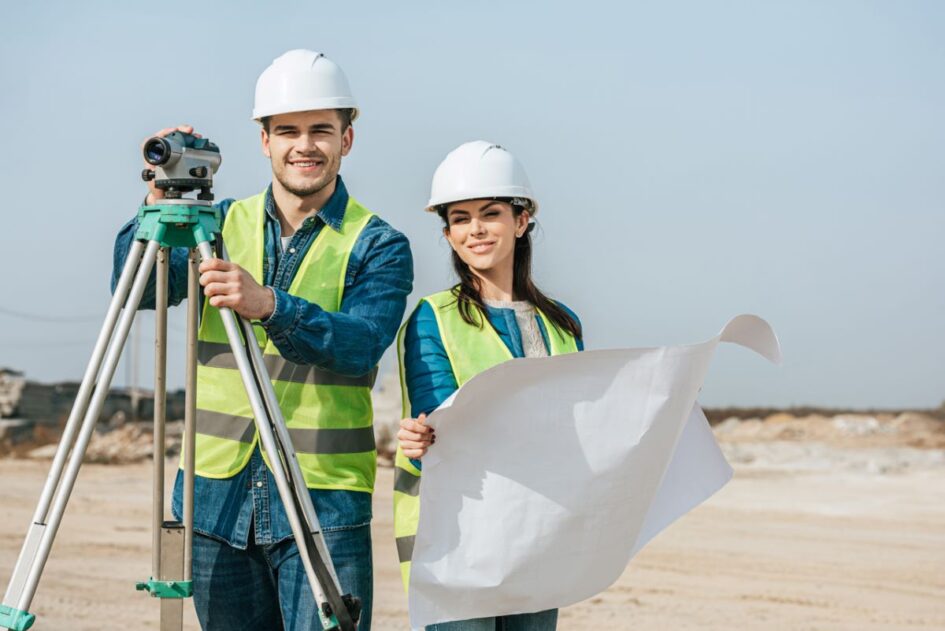Accurate land measurements are crucial for a wealth of applications, ranging from property development and urban planning to environmental management. In Sydney, surveyors play a vital role in ensuring that these measurements are precise and trustworthy. This article explores the essential functions of a Sydney surveyor, the processes involved in land surveying, the technology utilised, and important legal aspects associated with surveying land.
Understanding the role of a surveyor
A surveyor is a professional who measures and maps the Earth’s surface. Their role is integral in various industries, including real estate, construction, and environmental science. In Sydney, surveyors not only assess land for potential use but also provide vital data that informs planning and development decisions.
The importance of accurate land measurements cannot be overstated. These measurements impact property boundaries, planning permissions, and can affect legal ownership. Thus, surveyors are responsible for ensuring that every measurement taken is precise and reliable.
The importance of accurate land measurements
Accurate land measurements serve as the foundation for many critical decisions in property development. For instance, incorrect measurements can lead to boundary disputes, resulting in costly legal fees and project delays. Additionally, precise measurements ensure compliance with zoning laws and regulations, which can vary significantly across different regions of Sydney.
Moreover, inaccuracies in land measurements can have environmental consequences. Developers need to understand the topography of a land parcel to avoid disrupting natural waterways and wildlife habitats. This illustrates the need for skilled surveyors who can provide the necessary data to minimise environmental impacts. Their expertise is particularly crucial in areas where urban development meets natural landscapes, as they can help balance growth with ecological preservation.
The specific tasks of a Sydney surveyor
In Sydney, surveyors conduct a range of tasks, including boundary surveys, topographic surveys, and construction staking. Boundary surveys define property lines and are crucial when establishing ownership or resolving disputes. Topographic surveys capture the contours of the land, enabling better planning for building developments.
Construction staking marks out the locations for new structures on-site, ensuring accuracy during the building phase. Surveyors also assist in preparing various reports that detail land characteristics, which are essential for property developers and government agencies. Beyond these tasks, surveyors often engage in hydrographic surveys, which involve mapping underwater features. This is particularly relevant for coastal developments in Sydney, where understanding the seabed can influence construction and environmental strategies. Furthermore, surveyors may also utilise advanced technology, such as drones and 3D modelling software, to enhance the precision and efficiency of their work, thereby providing clients with comprehensive insights into their projects.
The process of land surveying in Sydney
The process of land surveying typically begins with an initial consultation and site assessment. During this phase, the surveyor meets with clients to discuss their requirements and objectives. The surveyor will then conduct a thorough assessment of the site to gather preliminary information.
This initial meeting is crucial, as it sets the stage for a clear understanding of the project’s scope and the specific measurements needed.
Initial consultation and site assessment
During the initial consultation, surveyors will also identify any existing documentation or historical data relevant to the land being surveyed. This could include previous survey reports, title deeds, and any existing disputes or concerns regarding the property.
The site assessment involves a visual inspection and may include discussions with local authorities or reviewing municipal regulations. This process is essential to anticipate possible obstacles or additional requirements that might affect the surveying process.
Furthermore, surveyors often engage with neighbouring property owners to gather insights that might not be immediately apparent. Understanding the context of the surrounding area can provide valuable information about potential easements, encroachments, or other legal considerations that could impact the project. This collaborative approach not only fosters good relationships within the community but also ensures that all relevant factors are taken into account from the outset.
Detailed land measurements and mapping
After the initial consultation, surveyors move on to taking precise land measurements. This task involves using various instruments to capture data accurately. Measurements include distances, angles, elevations, and the position of natural and built features around the site.
Once the data is collected, surveyors create detailed maps that reflect these measurements. This phase is critical as it transitions the collected information into a usable format for planning and design purposes.
In addition to traditional surveying techniques, modern technology plays a significant role in this stage. The use of GPS and laser scanning has revolutionised the accuracy and efficiency of land surveying. These advanced tools allow surveyors to capture intricate details of the landscape and produce three-dimensional models, which can be invaluable for architects and engineers in visualising the project. The integration of such technology not only enhances precision but also streamlines the workflow, enabling quicker turnaround times for clients eager to move forward with their developments.

The tools and technology used by Sydney surveyors
Surveyors in Sydney utilise an array of modern tools and technologies to ensure precision in their work. The evolution of surveying equipment has significantly enhanced the accuracy of land measurements, allowing surveyors to meet the increasing demands of clients and regulatory bodies.
From traditional equipment like the theodolite to advanced technologies such as GPS and laser scanners, the field of surveying has continually adapted to incorporate innovative tools.
Modern surveying equipment for precision
Some of the most commonly used modern equipment includes total stations, which combine the functions of the theodolite with electronic distance measuring tools. This technology allows for rapid data gathering and high accuracy, crucial for urban settings where precision is often mandated.
Additionally, GPS technology is increasingly utilised for surveying tasks. High-precision GPS receivers allow surveyors to determine locations on the Earth’s surface more accurately than ever, providing a reliable way to capture spatial data for development and planning projects.
Software applications in land surveying
Alongside hardware, software applications have revolutionised how surveyors analyse and present their findings. Geographic Information Systems (GIS) are now commonplace in land surveying, allowing surveyors to manage, analyse, and display geographic data effectively.
These software applications enable surveyors to create 3D models and detailed maps, making it easier for clients to visualise projects before any ground-breaking begins. This technological integration not only enhances the quality of the work produced but also improves communication with clients and stakeholders.
Moreover, the rise of cloud-based solutions has further transformed the surveying landscape. Surveyors can now store and share vast amounts of data in real-time, facilitating collaboration among teams and ensuring that all parties have access to the most up-to-date information. This shift to cloud technology not only streamlines workflows but also enhances data security, as sensitive information can be encrypted and protected from unauthorised access.
Furthermore, the incorporation of drones into surveying practices has opened new avenues for data collection. Drones equipped with high-resolution cameras and LiDAR sensors can capture aerial imagery and topographical data over large areas in a fraction of the time it would take traditional methods. This not only increases efficiency but also allows surveyors to access hard-to-reach locations, providing a comprehensive view of the land that can be crucial for planning and development purposes.
Legal and regulatory aspects of land surveying
Land surveying in Sydney is governed by a range of legal and regulatory frameworks that surveyors must adhere to. Understanding these regulations is essential to ensure that all work is compliant and reduces the risk of future disputes.
Surveyors work closely with local planning authorities, ensuring that their measurements align with established guidelines and zoning laws. This approach guarantees that developments conform to local regulations, providing peace of mind to clients.
Compliance with Sydney’s land regulations
In Sydney, surveyors must stay up-to-date with a multitude of regulations, including the Conveyancing Act and the Environmental Planning and Assessment Act. Compliance with these acts requires surveyors to have a thorough understanding of legal principles and land rights.
Surveyors are also responsible for ensuring that their practices meet professional standards set by bodies such as the NSW Land and Property Information agency. This adherence guarantees that all surveys conducted are legally valid and recognised in property transactions.
How surveyors help in property disputes
In the unfortunate event of a property dispute, surveyors serve as crucial intermediaries. Their expertise in land measurements can provide objective and factual information that can help resolve conflicts. When a dispute arises over boundary lines or property rights, a surveyor can conduct a new survey to validate or challenge existing claims.
Moreover, surveyors can offer expert testimony in court, substantiating their findings with detailed evidence and professional insight. This role as expert witnesses is invaluable in legal proceedings relating to property disputes, reinforcing the importance of their services.

Hiring a Sydney surveyor: Things to consider
When it comes to hiring a Sydney surveyor, there are several factors to consider to ensure you select a qualified professional who meets your needs. The right surveyor can make a significant difference in the success of your project, so careful consideration is essential. visit https://andyleegc.com/why-hiring-surveyors-in-sydney-is-essential-for-your-property-development/ to get more about why hiring surveyors in sydney Is essential for your property development.
Start by evaluating the qualifications and experience of potential surveyors. It is prudent to seek professionals who hold relevant certifications and have a proven track record in the field. Their experience in handling similar projects can greatly enhance the quality of their service.
Qualifications and experience
Surveyors should be registered with a recognised professional body, such as the Surveying and Spatial Sciences Institute. This registration not only demonstrates their competence but also their commitment to maintaining high professional standards.
Additionally, experience in the local area can provide distinct advantages. Sydney’s unique geography and regulatory environment require surveyors to have familiarity with local practices and legal frameworks. Engaging a surveyor with such experience can facilitate smoother project execution.
Cost and time estimates for land surveying
Finally, understanding the costs associated with land surveying services is vital for budgeting purposes. Surveying fees can vary widely based on factors such as project complexity, location, and the specific services required.
In addition to fees, it is essential to discuss time estimates with potential surveyors. Reliable timeframes can help manage expectations and ensure that the surveying process aligns with project schedules. Be sure to obtain detailed quotations that encapsulate all aspects of the service, from initial assessment to final report delivery.
In conclusion, a Sydney surveyor is an indispensable resource for anyone involved in property development or land management. By understanding their role, the processes involved, the technology they use, and the legal considerations they navigate, you can appreciate the critical part they play in achieving accurate land measurements. Engaging a qualified and experienced surveyor is essential for mitigating risks, ensuring compliance, and ultimately facilitating successful projects.

Leave a Reply